Many of us, at some point in our lives, have witnessed a 'ghostly' encounter. It may have been resolved - revealed as the trailing fingers of a tree's branches in the wind, or an unfortunate arrangement of coats and scarves on a hat stand - or it may remain a mystery. What we see, or believe we have seen, can be very personal and leave us with a lingering sense of unease. For most, signs from beyond the grave are a source of horror and even the most cynical can be entertained by a scary film or novel. We seem to love to scare ourselves and sometimes even seek out creepy environments to give ourselves a thrill. However, not everyone is terrified by the thought of paranormal activity. There are many who seek out ways of making contact with the spirits and consider it comforting to think that there's life beyond death, that loved ones could be able to contact us while we are living and watch over our daily lives.
Despite society's fascination with ghostly phenomena, the field of parapsychology is regarded by most scientists as pseudoscience. However, the University of Edinburgh has been teaching parapsychology, currently as an optional module for the psychology undergraduate degree, for more than forty years. As a city well-known for its ghostly history and paranormal happenings, this is not surprising. The course teachers seek to present the subject in a 'balanced fashion', which suggests that while not outrightly denying the existence of ghosts, the course is likely to involve a study of the psychological factors that lead people to believing they've experienced ghostly phenomena.
I intend to approach the subject in a similar way. When writing about a mythical creature from literature or film, I would focus typically on explaining how such a creature might operate if it was to exist, what it might look like and therefore conclude whether it would bear any resemblance to its depictions in popular culture. However, fiction has generally avoided 'explaining' ghosts. They are prevalent in films and literature, not just those with a fantasy or science fiction theme, often as an omen. The emotional reason for their return - to provide a warning or to conclude some business - is usually central to the plot, but the physical explanation for their return is not often questioned. In science fiction, ghost-like characters have been portrayed, usually as a preserved consciousness without a body or as a character trapped in an alternate universe or another state. However, these depictions are a far cry from the traditional ghost stories of literature. Unlike many other mythical or fantastical creatures, a large number of people believe that ghosts exist. Sightings of ghosts are so varied and arguments for their existence are based mainly on explaining the unexplainable, it seems a pointless endeavour to try to explain the unexplainable. Instead I intend to focus on why it is some people believe they've witnessed ghostly phenomena in some locations and why certain characteristics might make a location seem more haunted than others.
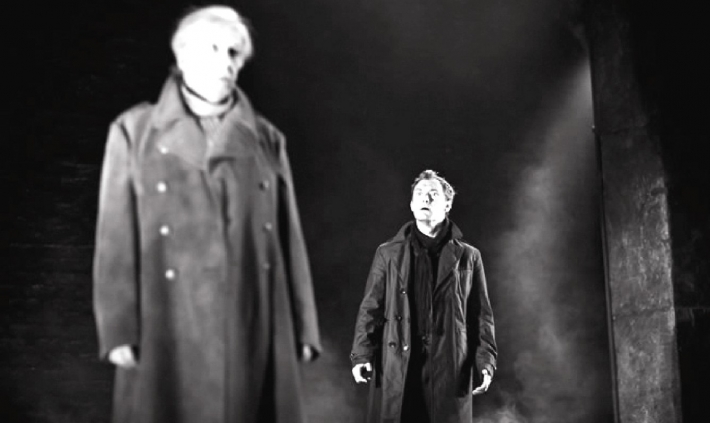
Hamlet (Jude Law, right) with the ghost of his father (Peter Eyre, left).
Credit: Hamlet Broadway
The term 'apparitional experience' is used in academic or scientific discussion to describe a paranormal experience, instead of referring to it as a 'ghost'. Accounts of apparitional experiences differ hugely from the ghostly experiences depicted in film and literature. 'Ghost' implies that some part of the human which has survived death, a soul or spirit, has made itself known to living human beings. However, apparitional experiences can be as vague as a sense of being watched, a feeling of nausea or sudden coolness or the apparent witness of moving objects. Ghost stories in literature and film usually have intensely emotional stories that lend weight to the experience. It is commonly believed that ghosts are souls stuck between this world and the next, because they have some emotional or material tie that means they can't move on into the otherworld or heaven. Some ghosts don't realise they've died, so the relive a moment over and over, obsessed with a person, an emotion or a significant moment in their life. One of literature's most famous ghosts is that of Hamlet's father in Shakespeare's play of the same name, who returns to tell his son that he was murdered by Hamlet's uncle. It is left ambiguous whether Shakespeare intended Hamlet to really see the ghost of his dead father or whether it was an apparition brought on by his madness. With such stories in mind, the witness can use their imagination to transform an apparitional experience into a very intense event.
Some who have a strong belief in the existence of ghosts conduct their 'ghosthunting' in a very methodical, almost scientific mannner. They use infrared film, tape recorders, meters to record electromagnetic fields, thermometers and other equipment to search for what they believe to be signs of paranormal activity. However, a large portion of evidence they base their findings on could be explained by factors that don't involve ghosts and many of their explanations of how apparitional experiences occur is scientifically inaccurate.
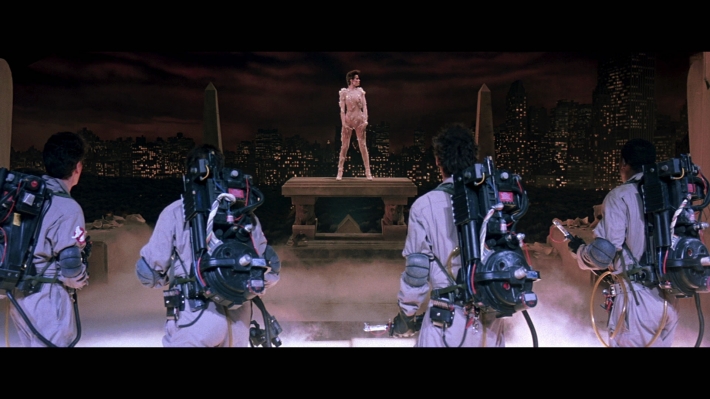
The Ghostbusters with Proton Packs.
Credit: Columbia Pictures
Air Ion Theory
Air Ion Theory is the belief that a spirit's presence affects the normal ion count in the surrounding atmosphere. It is thought that spirits are able to draw electrons out of the air around them, to gain enough energy to appear, or manifest themselves, in the presence of a living person. The 1984 film 'Ghostbusters' makes use of this idea, as the protagonists have weapons called 'Proton Packs' designed to counter the negative energy which ghosts are made of. These are nuclear accelerators which can produce a stream of positively-charged ions to 'trap' a ghost and control its movement.
However, taking a change in the normal ion count of the atmosphere as a sign of paranormal activity is likely to be misleading. Many natural phenomena, including weather and solar radiation, involve a change in ions. A particularly stormy day could make it appear that ghosts are in continuous abundance. It has also been found that various levels of ions in the air can have an effect on our physiology and our mood. Negative ions act to reduce levels of serotonin in the body, a chemical which plays an important role in mood and sleep patterns. Conversely positive ions increased levels of serotonin. High levels of serotonin are associated with feelings of anxiety, irritability and depression, even migraine headache attacks. It's not hard to see how the correlation could be mistaken for the influence of the paranormal.
Ghost-believers suggest that the air will become colder when a ghost draws energy from the surrounding atmosphere to manifest. This belief has found its way into films and literature. In J K Rowling's Harry Potter series, walking through a ghost is described as being like 'stepping through an icy shower'. Dementors, who are like ghosts or wraiths, feed off energy and happiness that they draw from their surroundings. In film and TV shows, the presence of ghosts is often marked by a character's breath becoming visible, indicating a drop in temperature. The TV series Supernatural employs this technique frequently, subtly building up tension in the scene.
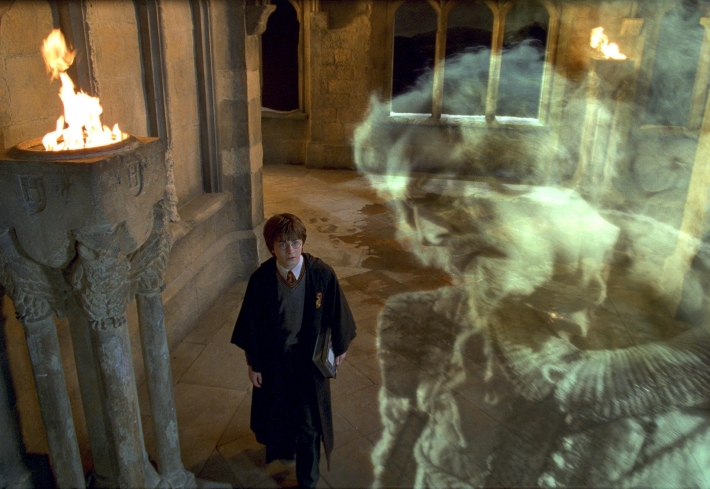
Harry Potter and 'Nearly Headless Nick'.
Credit: Warner Bros
These 'cold spots' appear to be supported by evidence from witnesses who report feeling cold before experiencing an apparition or other ghostly activity. However, there are many reasons why a person might feel cold under these circumstances. I don't think it would be unfair to suggest that someone may be more aware of their surroundings and more alert when they enter an environment they consider 'spooky', as they feel threatened and are more aware of danger. Something as simple of a draft of cool air through a chimney or window is likely to be more noticeable in such an environment, especially if the room is dark and the person involved can't see where the draft of cold air is coming from. Old stone buildings with poor lighting, typical locations for hauntings, seem to be the perfect environments for unexpected drafts through the brickwork or ventilation passages. Even in a sealed off room, objects in the room will be continuously losing heat due to convection to equalise the room temperature. When someone enters a room that has been empty for a while, the air flow will be disrupted. Humid air rises to the ceiling while dry air sinks, so the person entering the room will experience a sudden change in temperature. This is likely to cause unsettling discomfort, but it has a very simple explanation.
Just as feeling cold is likely to make someone feel uncomfortable, and perhaps influence them into believing they've witnessed ghostly phenomena, the spaces in which paranormal activity has been reputedly experienced may have a psychological impact on the people who enter. Ghosts appear to frequent either places with high ceilings and lots of spaces where things could be hiding in the dark, or very cramped spaces with low ceilings, often underground. Both of these spaces may make a person feel unsettled for different reasons. Perhaps the large space has too many dark corners, making us feel nervous when we can't see what is, or is not, lurking there. The cramped, narrow spaces may prompt a feeling of claustrophobia and of being trapped.
EMF
Professional 'ghost hunters' often have an electromagnetic frequency (EMF) meter in their toolkit, believing that spikes in the EMF signal indicate the presence of a spirit. In 'Ghostbusters', a device called a Psychokinetic Energy Meter is used to detect ghosts and other paranormal entities. As parapsychologists seek out ghostly activity by looking for peaks in electromagnetic activity, the Ghostbusters identify ghostly activity by searching for peaks in Pyschokinetic Energy. In both fiction and real parapsychology research, there's an expectation that unusual energy levels indicate the presence of a ghostly entity.
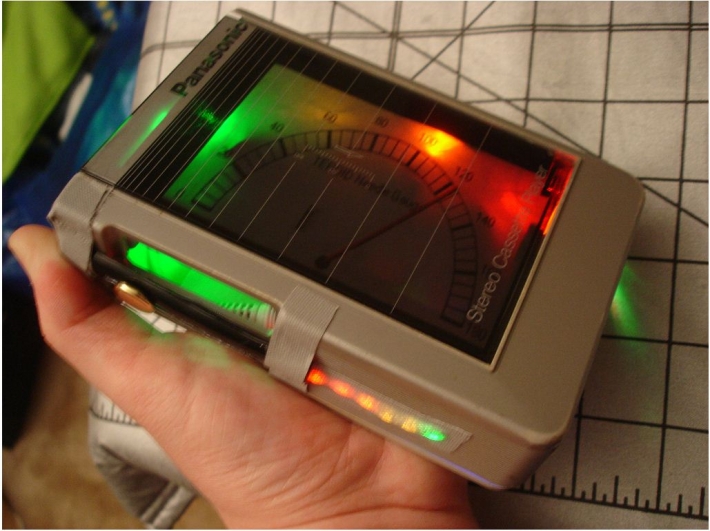
EMF meter.
Credit: New York Shadow Chasers
Studies conducted at Hampton Court Palace and Edinburgh's South Bridge vaults in 2002-3, by Dr Richard Wiseman and his colleagues, uncovered a correlation between participant's experiences at these locations and various environmental factors, including local electromagnetic fields.
The correlations between ghostly activity and magnetic variance were relatively large and tie in with laboratory findings that suggest varying magnetic fields have a measurable effect on human physiology.
-- Dr Paul Stevens, of the Koestler Parapsychology Unit at Edinburgh University.
They found a significant correlation between reported paranormal activity and variance in local magnetic field. Areas considered more 'haunted' showed higher levels of electromagnetic activity than areas where such activity has not been reported. This would appear to support the claims of the ghosthunters, if we were to ignore the proven effects of electromagnetic fields on the human body.
It has been shown in previous studies that variations in electromagnetic fields on some parts of the brain can result in the subject experiencing unusual sensations, like the feeling of being touched, or being in the presence of a spirit or divine entity. The researchers also noted how certain environmental cues, such as low lighting and drafts, increased the likelihood of a ghostly experience being reported. It seems electromagnetic activity is the cause of the experience and not the effect of paranormal activity. Instead, environmental cues, coupled with unusual electromagnetic fields exerted on the brain, can prompt believers into thinking they've experienced something paranormal.

The South Bridge Vaults, Edinburgh
Credit: Smartcityhostels.com
Infrasound
Another undetectable factor that could be influencing people's perception of their environment, causing them to experience something 'ghostly', could be infrasound. In a 1998 paper called 'Ghost in the Machine', Tandy describes his own experience of a 'haunting' and an incident that led him to discovering what was causing the phenomena. While working in a laboratory with a reputation for being haunted, Tandy himself experienced feelings of depression, the sense that he was being watched and finally witnessed an apparition of a figure standing in the room. The following day, he returned to work on a blade for a fencing competition, which began vibrating within the drill vice. He discovered that there was a low frequency standing wave in the laboratory, caused by a recently installed fan in the extraction system. He surmised that this low frequency infrasound of approximately 19Hz was causing the paranormal activity that had been so frequently witnessed in the lab.
Infrasound has been shown to affect humans in strange ways, making people feel nauseous or dizzy. These low frequency waves are resonant with our bodies and can cause them to vibrate. Frequencies resonant with the stomach will make us feel queasy; frequencies of between 2-20Hz are resonant with our heads, making us feel generally uncomfortable. Most significant in explaining the apparitions in the laboratory is the fact that a NASA technical report recorded the resonant frequency for the eye as 18Hz. A wave at this frequency could cause the eyeball to vibrate and affect the person's vision, so a shape in the corner of the eye could be distorted to appear like something else. As this was so close to the frequency of the sound waves recorded in the laboratory, it seems the presence of infrasound is a reasonable explanation for the discomfort and the apparition experienced by Tandy. It could be an explanation for many further ghostly phenomena, as infrasound is produced by everyday appliances and a number of natural processes: storms, wind and weather patterns.
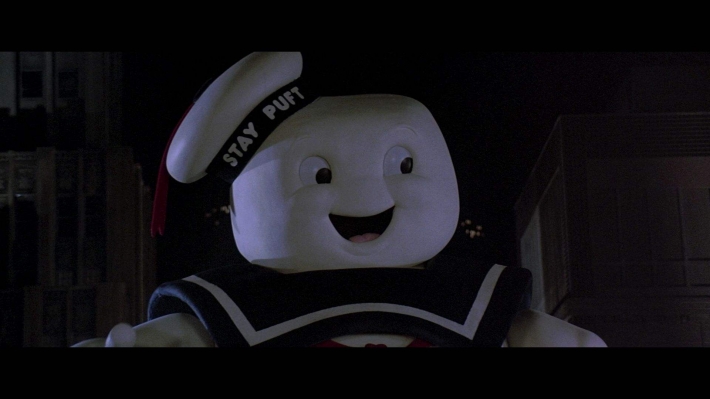
The Stay Puft Marshmallow Man.
Credit: Columbia Pictures
There are a great number of environmental factors that can cause us to feel unsettled and to prompt the kind of experience we might confuse with the paranormal. The likelihood of witnessing such an 'apparitional experience' is increased in people who believe in the paranormal and are more likely to interpret the signs as communication with a spirit. Locations that are rumoured to be 'most haunted' typically exhibit the environmental cues that make us feel more unsettled, and are likely to be 'hotspots' for unseen environmental factors such as increased electromagnetic activity and low frequency sound waves. Rumours of the 'haunted' building are likely to attract more believers, susceptible to the environmental factors at the site, and so perpetuating the belief that there are particularly haunted areas. It seems that a confusion of cause and effect maintains the myth of ghosts: it's not the paranormal presence that makes a location creepy, but it is the environmental factors that make a location seem creepy, which also increase the number of reported ghostly experiences.
The wonderful thing about fiction is that the ghosts could be a figment of a character's imagination or the paranormal could truly be the reality.
The Opera ghost really existed. He was not, as was long believed, a creature of the imagination of the artists, the superstition of the managers, or a product of the absurd and impressionable brains of the young ladies of the ballet, their mothers, the box-keepers, the cloak-room attendants or the concierge. Yes, he existed in flesh and
blood, although he assumed the complete appearance of a real phantom; that is to say, of a spectral shade.
-- Leroux, 'The Phantom of the Opera' (Prologue)
References & Further Reading
- Leroux, 'Le Fantôme De L'Opéra', Pierre Lafitte and Cie (1909-1910).
- Rowling, 'Harry Potter And The Chamber Of Secrets', Bloomsbury (1998).
- Shakespeare, 'Hamlet' (c. 1599-1602).
- 'Ghostbusters', Columbia Pictures (1984).
- 'Supernatural', Warner Bros. (2005-Present).
- Kroemer, 'Materials Science and Applied Physics' (1994).
- Massullo, 'Environmental Sensitivity and Paranormal Experiences', The University of Edinburgh (2008).
- Tandy & Lawrence, 'The Ghost In The Machine', Journal of the Society for Psychical Research (1998).
- Tandy, 'Something In The Cellar', Journal of the Society for Psychical Research (2000).
- Wiseman et al, 'An Investigation Into The Alleged Haunting Of Hampton Court Palace: Psychological Variables And Magnetic Fields', Journal of Parapsychology (2002).
- Wiseman et al, 'An Investigation Into Alleged 'Hauntings', Journal of Parapsychology (2003).
- Koestler Parapsychology Unit, The University of Edinburgh Psychology Department.
Listing image: Universal Pictures
